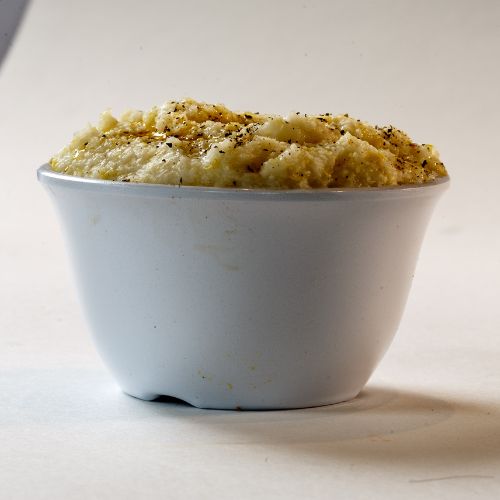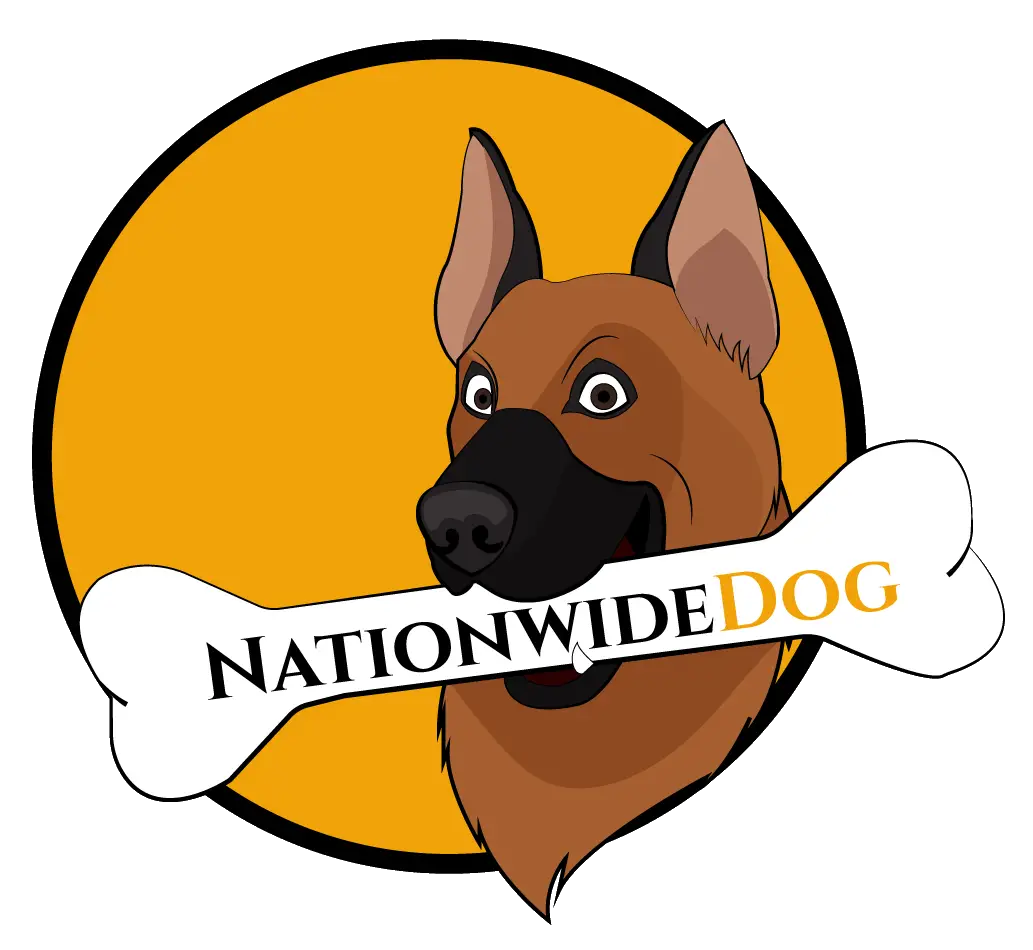In the southern United States, grits are a typical side dish for breakfast and dinner. However, dog owners often wonder if their pets would enjoy them as much as they do. So, can dogs eat grits? Even though grits are essentially empty calories, dogs can occasionally consume them without any problems. However, it is essential to know how to prepare and how much you can feed grits to your doggy. Lets discuss all details now.
What are Grits?
Grits, a meal made from crushed or ground maize, is a favorite in the American South. Native American culture is where they first appeared. They are made from dent corn, a type of corn with a soft and starchy kernel.
Usually, water, milk, or broth is used to simmer crushed maize until it has a creamy and thick consistency, like porridge. People enjoy grits with catfish, cheese, butter, bacon, shrimp, sugar, or similar foods.

Benefits of Grits
1. Reduced Risk of Anemia
Since grits are high in iron, grits help prevent the onset of iron deficiency anemia, which is more prevalent in elderly persons. They also contain a lot of folates, a vitamin that, when deficient, can cause anemia.
2. Risk of Heart Disease
Grits are whole grain that contains several antioxidants that reduce the harm that free radicals, unstable atoms in the body, do to cells.
3. Nutrition
10% of the daily iron requirement is provided by one serving of stone-ground grits. Additionally, they are a great source of several B-complex vitamins, such as:
- Thiamine
- Riboflavin
- Pyridoxine
- Niacin
- Folate
Types of Grits
Stone Ground Grits
Old-fashioned or stone ground grits are milled with the germ still present, giving them a rougher texture and stronger flavor than other types. Keeping them in the freezer is recommended because they are less processed and more perishable.
Quick Cooking Grits
Rapid cooking Grits cook more quickly because they have been more finely milled, as the name suggests.
Instant Grits
Instant grits are pre-cooked, dehydrated foods that must be rehydrated in hot water to finish cooking.
Hominy Grits
Hominy grits are prepared from corn, with their hull softened by soaking in an alkaline solution (often lye or lime). The kernels are dried first, and the stone is ground before removing the husk.
Heirloom Grits
Since several types of corn are used to make heirloom grits, you may find blue grits, which are prepared from blue corn, or Bloody Butcher grits, which get their name from the reddish tint that dent corn has.

Is it okay for a dog to eat grits?
Grits’ main component, maize, is a dog-friendly food. A medium-sized dog shouldn’t ingest more than a tablespoon of plain grits daily without consulting a veterinarian.
Is it Dangerous?
The dish can be harmful to your dog to eat, depending on the precise ingredients you use and your particular pet. As the simple carbs and toppings in cheddar grits, quick grits, and other common varieties of grits are hazardous for dogs, ensure the food doesn’t contain any additional seasonings or additives.
Types of Grits Your Dog Can Eat
A type of cornmeal produced from ground corn is known as grits. It tastes nutty and has a slightly gritty texture. Dogs can consume corn grits as long as they do so in moderation. Grits are a fantastic way to spice up and diversify your dog’s diet.
Given that grains are among the easiest foods for dogs to digest, they shouldn’t object to eating them just because they aren’t like the usual dry kibble dinner croutons (though be careful not to offer your dog anything too hot!).
1. Cooked Grits – The Best Type of Grits for Dogs
Don’t add anything to the cooked grits you give your dog. They might be able to consume this if it’s an occasional treat or if they’ve had it before without experiencing any adverse effects, but only in moderation.
Dogs can eat plain grits that have been well cooked, but we won’t suggest instant or hominy grits. Cook basic grits without additional spices if your dog enjoys them because such spices could be poisonous to your animal friend. However, giving him too many carbohydrates could lead to weight gain and other health problems in dogs!
2. Dry Grits
Dogs shouldn’t consume dry grits because doing so will strain their digestive systems and lead to health issues. Although dry grit is not dangerous in and of itself, feeding your dog this diet may require extra water, which may delay the digestion of the meal and result in needless suffering and a higher risk of obesity or diabetes.
3. Cheesed Grits
For dogs, grits are a well-liked carbohydrate. However, some individuals discover their dogs are lactose intolerant. If you don’t know if your dog is lactose tolerant or intolerant, get him tested. Cheese grits are beneficial because they contain protein and calcium.
4. Buttered Grits
For your dog, butter is not the ideal solution. Much of it can cause heat-related illnesses. Although a modest amount is safe, feeding your dog this kind of saturated fat won’t provide any nutritional advantages for their health.
5. Grits with Sugar
Giving sugar grits to your dog may cause weight gain and problems with their blood sugar levels. We advise that you refrain from doing this at all costs because you shouldn’t give them any!
6. Grits with Eggs
A safe and wholesome treat for your dog is eggs. They have high-quality protein and vital amino acids, which can satisfy them in various ways. On exceptional occasions, you can prepare a delectable treat for your dog using a lot of eggs and a few grits. It’s safer.

How Much Grits Can Dog Eat?
If the grits are simple, tiny amounts are okay for dogs to consume, but what does a modest amount mean?
Experts often recommend a teaspoon for small breeds and a tablespoon for large dogs based on the ASPCA’s rule of no more than 10% treat foods, but every dog is different. Obesity is caused by eating too many carbohydrates, although athletic dogs who exercise more can eat more.
Summary
Now that you know, that dogs can eat grits, you can add the right items to your dog’s diet.
Grits can be prepared in various ways, so as a responsible dog parent, you should consider which ones are the safest to feed your dog.
Grits are a mainstay of Southern cooking, and now both people and dogs may eat them. However, bare a few things in mind before serving this delectable side dish to your dog.
First of all, dogs with sensitive stomachs or allergies may not be the ideal candidates for grits; it is recommended to speak with your veterinarian if you have any concerns about potential adverse effects on your pet.
Thank you for reading “Can Dogs Eat Grits?”
We would love to hear about your experiences giving your dog grits – please give your comments below.
Other dog owners will appreciate and benefit from it.

